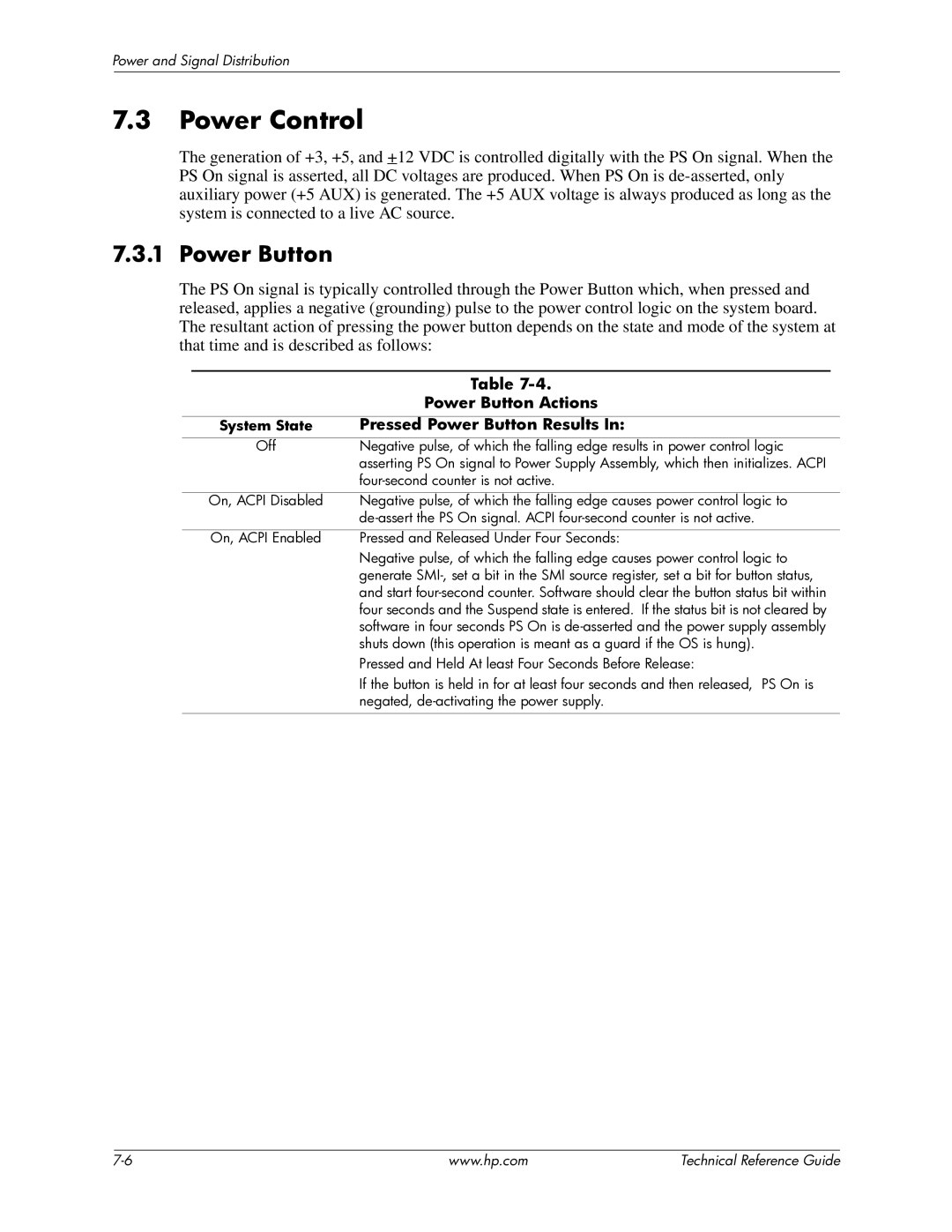Power and Signal Distribution
7.3Power Control
The generation of +3, +5, and +12 VDC is controlled digitally with the PS On signal. When the PS On signal is asserted, all DC voltages are produced. When PS On is
7.3.1 Power Button
The PS On signal is typically controlled through the Power Button which, when pressed and released, applies a negative (grounding) pulse to the power control logic on the system board. The resultant action of pressing the power button depends on the state and mode of the system at that time and is described as follows:
|
| Table |
|
|
| Power Button Actions |
|
|
|
|
|
| System State | Pressed Power Button Results In: |
|
| Off | Negative pulse, of which the falling edge results in power control logic |
|
|
| asserting PS On signal to Power Supply Assembly, which then initializes. ACPI |
|
|
|
| |
|
|
|
|
| On, ACPI Disabled | Negative pulse, of which the falling edge causes power control logic to |
|
|
|
| |
|
|
|
|
| On, ACPI Enabled | Pressed and Released Under Four Seconds: |
|
|
| Negative pulse, of which the falling edge causes power control logic to |
|
|
| generate |
|
|
| and start |
|
|
| four seconds and the Suspend state is entered. If the status bit is not cleared by |
|
|
| software in four seconds PS On is |
|
|
| shuts down (this operation is meant as a guard if the OS is hung). |
|
|
| Pressed and Held At least Four Seconds Before Release: |
|
|
| If the button is held in for at least four seconds and then released, PS On is |
|
|
| negated, |
|
|
|
|
|
| www.hp.com | Technical Reference Guide |
